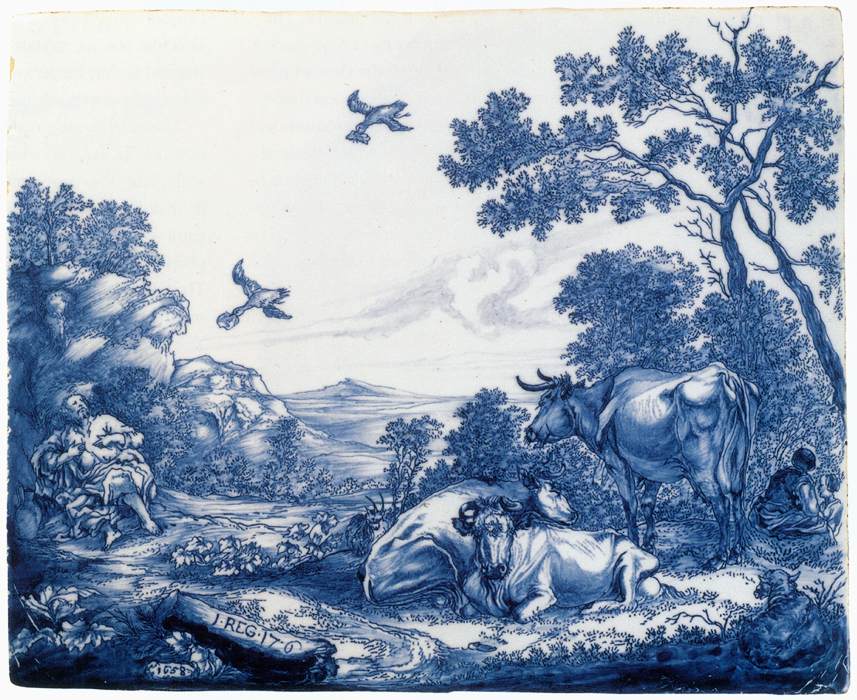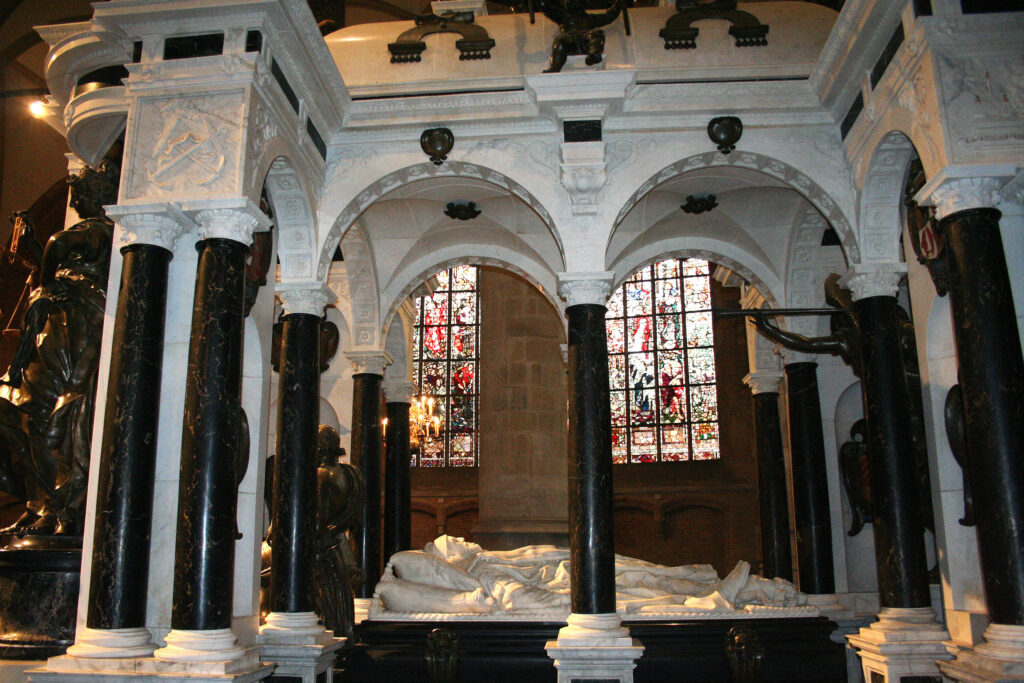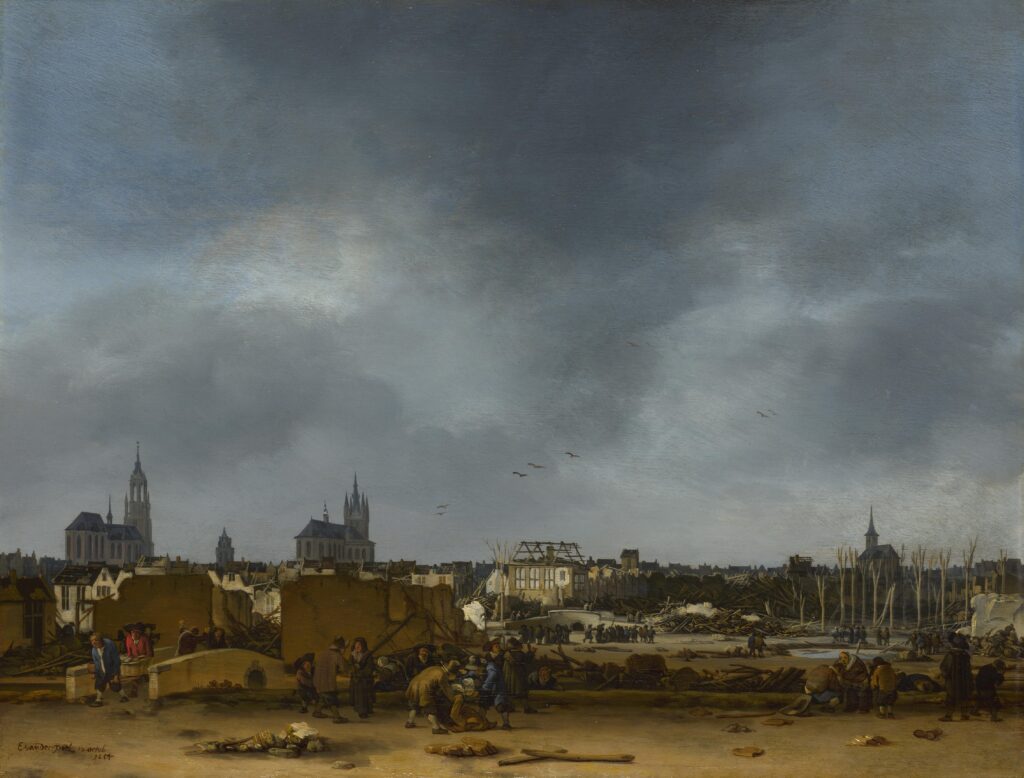delft
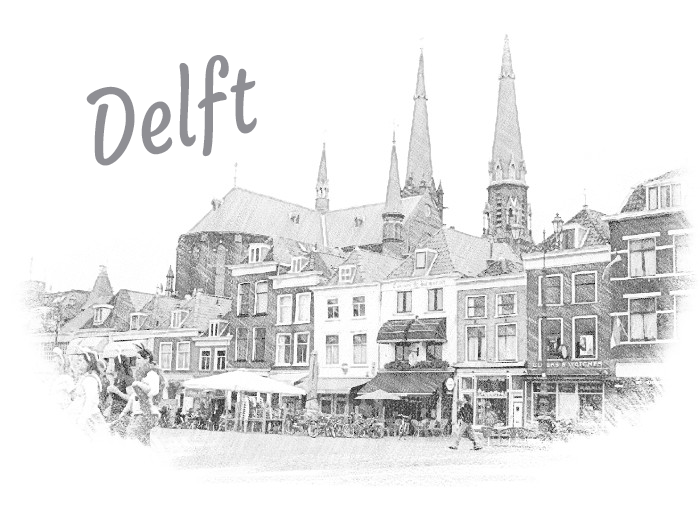
rich history and stunning beauty
Delft is a charming and picturesque city that captivates visitors with its rich history and stunning beauty. Known for its iconic canals, cobblestone streets, and classic Dutch architecture, Delft offers a delightful glimpse into the country’s past and present.
Perhaps most famous for its Delftware, the city boasts a long-standing tradition of fine porcelain craftsmanship. Tourists can explore the Royal Delft, the last remaining original Delftware factory, and witness skilled artisans creating intricate blue and white ceramic masterpieces.
Beyond its artistic heritage, Delft is steeped in history. The historic Oude Kerk and Nieuwe Kerk, dating back to the 13th and 15th centuries, stand as impressive landmarks. The Nieuwe Kerk, in particular, serves as the final resting place of William of Orange, a key figure in Dutch history.
Delft’s vibrant city center buzzes with life, offering a wide array of boutique shops, cafes, and restaurants. Strolling along the canals, one can enjoy the tranquility and unique atmosphere that Delft exudes.
For those seeking a cultural experience, the city hosts numerous museums and galleries, showcasing art, science, and history. Furthermore, Delft University of Technology contributes to the city’s intellectual appeal, drawing young minds from across the globe.
Whether it’s the captivating pottery, the rich history, or the serene canals, Delft’s allure leaves an indelible mark on every traveler fortunate enough to wander its charming streets.
delft blue
Or Delftware
Delft blue or delftware is a type of faience (pottery) with blue decoration, which is traditionally manufactured in Delft.
It originated at the end of the 16th century as a cheap alternative to the blue-white Chinese porcelain. Delft blue became very popular in a short time and flourished in the period 1650-1750, when there were about a hundred pottery factories active in Delft. The industry was wiped out around 1800 by cheaper pottery from England (Staffordshire). Nowadays there is only one factory in Delft that produces ‘real’ Delft blue, “De Porceleyne Fles”.

The city hall stands on the Markt opposite the Nieuwe Kerk.
The first construction of the town hall dates from 1200. In 1400 it was rebuilt or rebuilt. The building survived the great city fire of 1536, but on March 4, 1618, the town hall burned down. Then it was rebuilt in 1618-1620 after a design by Hendrick de Keyser around the oldest building that Delft still has today: a belfry called the Oude Steen. In the course of time, the town hall was adapted. In addition, the double staircase to the main entrance had to give way, the main entrance was widened at the expense of two windows, and the shutters and the stained glass windows disappeared. In the twentieth century, the town hall was restored under the direction of architect Jo Kruger, and is now back in the state of the design of Hendrick de Keyser. The town hall is an example of the Dutch Renaissance style.
Delft Railway Station
The initial Delft railway station was located on the Houttuinen, close to the current building. The first train passed through it on 31 May 1847, and three days later the station opened to the public.
Because of increasing numbers of passengers and goods transported, a new, larger railway station opened in 1885, just to the south of the original station. Christiaan Posthumus Meyjes, Sr. designed the latter building. This building was used until 2015 when the current building opened. The old station building is historically significant, and since 2018 has been occupied by an Italian restaurant.
The above-ground part of the new station (2015) was designed by Mecanoo Architects from Delft. The underground part was designed by the Amsterdam office Benthem Crouwel. The multi-storey station has a hall with a vaulted ceiling with slats on which a city map of Delft from 1877 is depicted. The columns and walls of the station hall are covered with broken tiles in a contemporary variant of Delft blue. Between the station hall and the platforms of the railway tunnel (second layer under the ground) is the bicycle shed with space for 5000 bicycles. A second garage where 2700 bicycles can be stored for a maximum of 28 days is located under the platforms of the former station on the Nieuwe Gracht.

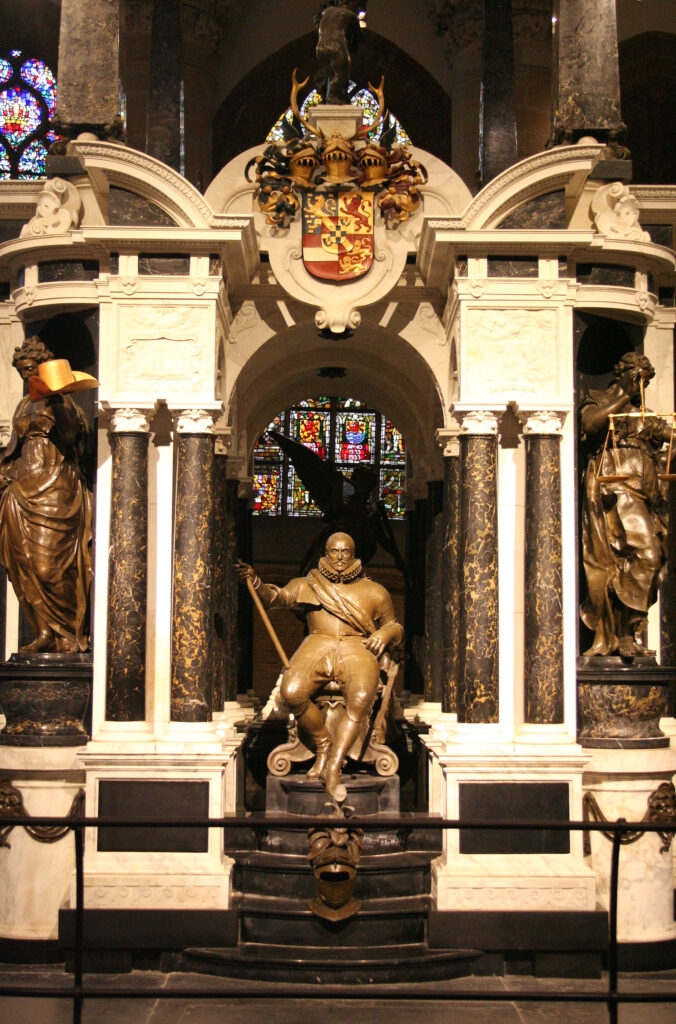 Majestic grave of William of Orange in the Nieuwe Kerk
Majestic grave of William of Orange in the Nieuwe KerkPrince William of Orange resided for a short time in Delft, in the former Sint-Agathaklooster, which has since been called Prinsenhof. He was murdered there on 10 July 1584 by Balthasar Gerards.Within the history of the Netherlands, Delft is best known because William of Orange moved there from 1572 and was murdered there in 1584. Since then, the Oranges have traditionally been buried in Delft. The nickname of Delft is the Prinsenstad. The patron saint of the city is Hippolytus of Rome.
After the assassination attempt by Balthasar Gerards, William of Orange was buried in a cellar in the Nieuwe Kerk on 3 August 1584.
The (temporary) funerary monument first consisted only of a canopy with an empty coffin underneath.
Years later, during the Twelve Years’ Truce, the famous sculptor Hendrick de Keyser only started work on the current mausoleum, which would become his masterpiece. However, De Keyser died two years early, and his son Pieter finished the work in 1623. The monument is still considered the finest example of funerary art from that time.
In 1996, the funerary monument had to be radically restored. Salts had affected the marble. During the restoration, the tomb was divided into 850 pieces. One by one, the elements were cleaned and reassembled. As a result, the monument can last for years as a crowd puller.
william of orange father of the fatherland
William of Orange was born into a noble German family – the Nassaus. When he was eleven years old, he inherited the principality of Orange and came to the court of King Charles V.
He was so popular with the king that he leaned on William’s shoulder when he resigned. To his son and successor Philip II, the king said, “Honor this young man, he can be your most valuable counselor and support.” No one suspected then that William and Philip would become arch-enemies.
Over time, Philip II appointed William of Orange as stadtholder of Holland, Zeeland and Utrecht. With the rise on the social ladder, however, William’s aversion to Philip II also increased. The king wanted to create one large European state by force, with Roman Catholicism as the only religion. Willem, on the other hand, fought for freedom of religious practice.
Oppression
The Protestants in the Low Countries were increasingly oppressed. The conflict reached a climax and William had to flee to Germany with his family in April 1567. From there, Orange – who himself was Roman Catholic – attacked the Spanish ruler with an army he had assembled. However, it was not possible to stop the advance of Philip II.
Assassination
15 March 1580 declared king William of Orange outlawed. There were several attacks on his life. The last period of William’s life he stayed in Delft, in the current Prinsenhof. There he felt relatively safe … However, the Frenchman Balthasar Gerards managed to penetrate and shot him from a short distance. William’s last words were, according to tradition (in French): “My God, My God, have mercy on me and on this poor people.”
Impossible burial
William of Orange would have been buried in Breda, were it not for the fact that this city was occupied by the Spaniards. So Van Oranje was buried in the Nieuwe Kerk in Delft. Since then, all members of the Dutch Royal Family have found their final resting place here.
market square
biggest tourist attraction
Discover the magic of The Westland

tHE PRINSENHOF
The Sint-Agathaklooster is a former convent on the Sint Agathaplein . Nowadays, museum Prinsenhof Delft is located in the complex.
Alyd Busers was a wealthy widow who joined a group of Delft sisters at the end of the fourteenth century — together with her daughter Aechte. In 1403 this group took a house on the Oude Delft into use as a monastery. They named this monastery the St. Agatha Monastery after Saint Agatha. Alyd Busers became the first mother superior. After the Reformation in the second half of the sixteenth century, the building complex was divided into separately used parts. Part of the chapel remained in use as a now Reformed ecclesiastical space and in the long south wing some tolerated nuns remained. The remaining part of the buildings was converted into the court of Prince William of Orange, who regularly stayed in the Sint-Agathaklooster from 1572 to 1584. As a result, it has since been known as ‘Het Prinsenhof’. In 1584 he was murdered in the Prinsenhof by Balthasar Gerards. At the place where this happened, the bullet holes can still be seen in the wall.

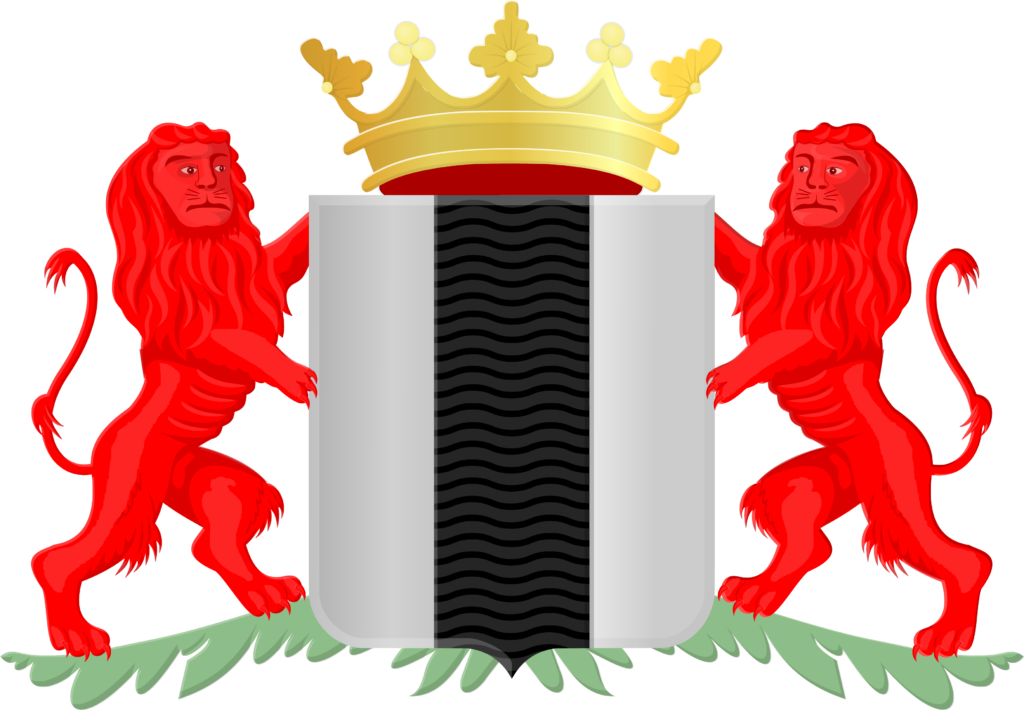
After the end of the French period, the city received a new coat of arms that closely resembled the one used for the introduction of the Napoleonic coat of arms. The new coat of arms has a number of adjustments compared to the old coat of arms: the lions looking at the spectator as shield holders and the crown on the shield. The old coat of arms did not carry a crown and the new coat of arms carries a crown of graves. This coat of arms was granted by Royal Decree on 16 July 1816
kruitmagazijn
On Monday morning, October 12, 1654, Cornelis Soetens went into the cellars of The Secreet of Holland to take a sample of gunpowder.
The Secreet of Holland was a powder store in the buildings of the former St. Clare’s Monastery in the northeast of the city. Nobody knows what went wrong, but the gunpowder present, between 80,000 and 90,000 pounds, exploded. The Delft historian and eyewitness Dirck Evertsz. van Bleyswijck paints us apocalyptic images thirteen years after this disaster. The sky seemed to crack and crack him, tear the earth and hell open its jaws.
In Delft, as in other fortified cities, weaponry and gunpowder were stored in various buildings. In 1602, the first part of the Armamentarium was specially built for the arms storage of the States of Holland, but in addition, various empty rooms were used for this, such as the chapel next to the Girls’ House. Van Bleyswijck writes that the sound of the explosion was heard as far as Texel. With the explosion, a cloud of dust and toxic fumes rose within the city walls, as if hellish pools opened their throats to darken and poison the world with their poisonous breath. In that cloud, all kinds of stone grit, wood and human remains were thrown away outside the city walls. Nothing could be found of the powder tower itself. At the place where he had stood, a deep pit of water had formed. The entire northeast corner of the city lay flat; there was no building left standing on the Verwersdijk, the Doelenstraat and the Geerweg. The large trees near the schuttersdoelen, next to the monastery complex, had been knocked away by the ground. There was extensive damage to various buildings in the city and more than two hundred houses were completely destroyed.
Van Bleyswijck estimated this disaster to be more serious than the city fire of 1536, because this thunderclap took away entire streets in the blink of an eye with old and young people, sick and healthy, rich and poor. The number of victims has never been clarified. Some people have never been found, while only unrecognizable remains of many people have been found. A well-known victim was the painter Carel Fabritius, who was taken out of the mess of his house injured and died shortly afterwards.
The disaster made a huge impression. Stories of miraculous rescues circulated. Pastor Pieter de Witte in a long sermon labeled the explosion as a punishment from God. Rhymes and poets devoted verses to the event. Painters depicted the consequences on canvas. Help also came from various sides: the States of Holland and West Friesland made 100,000 guilders available. A collection was held in Delft. Wealthy citizens bought thousands of roof tiles to distribute to ‘small bells’. Later it turned out that these building materials were sold on the market for a high price. The destroyed district was redesigned, creating the Paardenmarkt. The building of the schuttersdoelen was moved to the current Doelenplein. When there were plans to build a new gunpowder store, this was done in a safe place outside the city walls. Pieter Post’s beautiful gunpowder house is ‘at a cannon shot distance’ from the city






